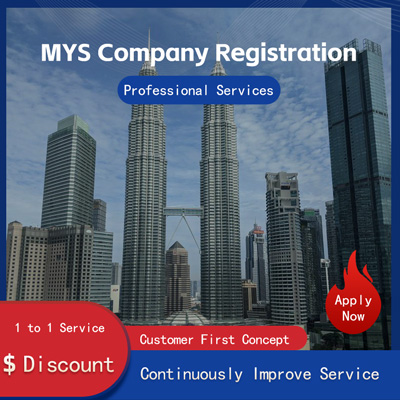
How Is Value-Added Tax VAT Calculated in the U.S.?
Value-Added Tax VAT in the United States is a topic that often sparks curiosity, especially as many countries around the world have implemented this form of taxation. VAT is essentially a consumption tax applied to goods and services at each stage of production or distribution. However, as of now, the United States does not have a federal-level VAT. Instead, it relies on a sales tax system at the state and local levels. This article will explore how a potential VAT might work if it were implemented in the U.S., drawing from global practices and recent economic discussions.
To understand VAT, let's first look at how it operates in other countries. For example, in Europe, VAT is levied at every step of the supply chain, from raw materials to finished products. Each business collects VAT from its customers and pays it to the government, but it can also reclaim VAT paid on purchases. The result is a tax that only affects the end consumer, as businesses are reimbursed for the taxes they pay on inputs.

Imagine a simplified scenario in the U.S. where a VAT is introduced. A manufacturer buys raw materials for $100, including a 10% VAT, which amounts to $10. The manufacturer then produces a product worth $200, applying another 10% VAT, resulting in $20. The retailer buys the product for $220 $200 + $20 VAT and sells it to the consumer for $300, adding another 10% VAT, which equals $30. In this case, the consumer ends up paying the full VAT of $60, while businesses along the way recover their input VAT.
The implementation of VAT in the U.S. could bring several benefits. Economists argue that a VAT could provide a stable revenue stream for the government, as it would be less affected by economic fluctuations compared to income taxes. Additionally, a VAT could encourage savings and investment by reducing the tax burden on wages. Recent studies suggest that a well-designed VAT could help reduce budget deficits and fund essential public services.
However, there are concerns about the fairness of VAT. Critics point out that it is regressive, meaning lower-income households spend a larger percentage of their income on taxed goods and services. This issue has been highlighted in discussions following the introduction of VAT in countries like Mexico and South Africa, where policymakers had to implement complementary measures to protect vulnerable groups.
In the U.S., the existing sales tax system already exhibits some regressive characteristics, as it applies uniformly regardless of income. If a VAT were introduced, it would be crucial to design it with exemptions or rebates for essential items such as food and healthcare. For instance, in Canada, the GST/HST system includes zero-rated goods, meaning they are exempt from VAT, helping to alleviate the burden on low-income families.
Another consideration is the complexity of implementing a VAT. Countries like India and Brazil have faced challenges in integrating VAT into their tax systems due to the need for extensive administrative reforms. In the U.S., the federal system complicates matters further, as states and localities currently handle their own sales taxes. A national VAT would require coordination between federal and state governments, a task that has proven difficult in other regions.
Despite these challenges, recent news indicates growing interest in VAT-like structures in the U.S. Some economists and policymakers have proposed introducing a federal-level VAT as part of broader tax reform efforts. These proposals often include provisions to make the tax progressive, ensuring that higher-income individuals contribute more. Such discussions reflect the ongoing debate over how to fund government operations in an increasingly complex economy.
In conclusion, while the U.S. does not currently have a VAT, understanding how it works in other countries provides valuable insights into its potential impact. A well-implemented VAT could offer financial stability and encourage economic growth, but careful consideration must be given to its fairness and implementation logistics. As the conversation continues, it remains to be seen whether the U.S. will adopt this form of taxation in the future.
Helpful (0)
No help (0)
Still have questions after reading? More than 98,000 users have contacted us. Please fill in the following information to obtain business information.

Service Scope
MoreRecommended for You
- How to File and Pay German VAT After Registration? A Detailed Guide
- Analysis of the VAT Declaration Process After Registration in Germany
- What Is the German VAT Rate and How to Calculate It?
- How Long Is the VAT Filing Period in Germany?
- Risks of Non-Filing After German VAT Registration
- Germany VAT Registration Reporting Periods Filing Deadlines
- Germany EORI No. and VAT No. Differences in Meaning and Application Methods
- Polish Import VAT Calculation Method
- A Comparison of German VAT ID and EU Tax ID
- What's the VAT Rate in Germany? How to Calculate the VAT Rate in Germany?
- Germany VAT Registration Filing Requirements Summary
- What Are the Specific Methods for Registering and Filing German VAT Numbers?
- Guide to Applying for a German VAT ID Checking VAT Eligibility
- GERMANY VAT REGISTRATION REQUIREMENTS AND NOTES FOR TRANSFERRED AGENCIES
- A New Chapter in Smart Warehousing Equipment and Technology Innovation and Development
- Documents Required and Filing Process for French VAT Declaration
- Documents Required for French VAT Number Registration List and Requirements
- How Long Does It Typically Take to Obtain a VAT Number in France?
- What Are the Specific Requirements for VAT Filing in France?
- What Are the VAT Rates for Registration and Filing in France?


 ONE
ONE








Customer Reviews
Small *** Table
December 12, 2024The experience was very good. I was still struggling to compare it with other companies. I went to the site a few days ago and wanted to implement it as soon as possible. I didn't expect that everything exceeded my expectations. The company is very large, with several hundred square meters. The employees are also dedicated and responsible. There is also a wall of certificates. I placed an order on the spot. It turned out that I did not make a wrong choice. The company's service attitude is very good and professional. The person who contacted me explained various things in detail in advance. After placing the order, the follow-up was also very timely, and they took the initiative to report the progress to me. In short, I am very satisfied and recommend this company!
Lin *** e
December 18, 2024When I first consulted customer service, they recommended an agent to me. They were very professional and patient and provided excellent service. They answered my questions as they came in. This 2-to-1 service model is very thoughtful. I had a lot of questions that I didn’t understand, and it’s not easy to register a company in Hong Kong. Fortunately, I have you.
t *** 7
December 19, 2024I originally thought that they only did mainland business, but I didn’t expect that they had been doing Hong Kong business and were doing very well. After the on-site interview, I decided to ask them to arrange the registration of my Hong Kong company. They helped me complete it very quickly and provided all the necessary information. The efficiency was awesome. It turns out that professional things should be done by professionals.👍
b *** 5
December 16, 2024In order to register a company in Hong Kong, I compared many platforms and stores and finally chose this store. The merchant said that they have been operating offline for more than 10 years and are indeed an old team of corporate services. The efficiency is first-class, and the customer service is also very professional.